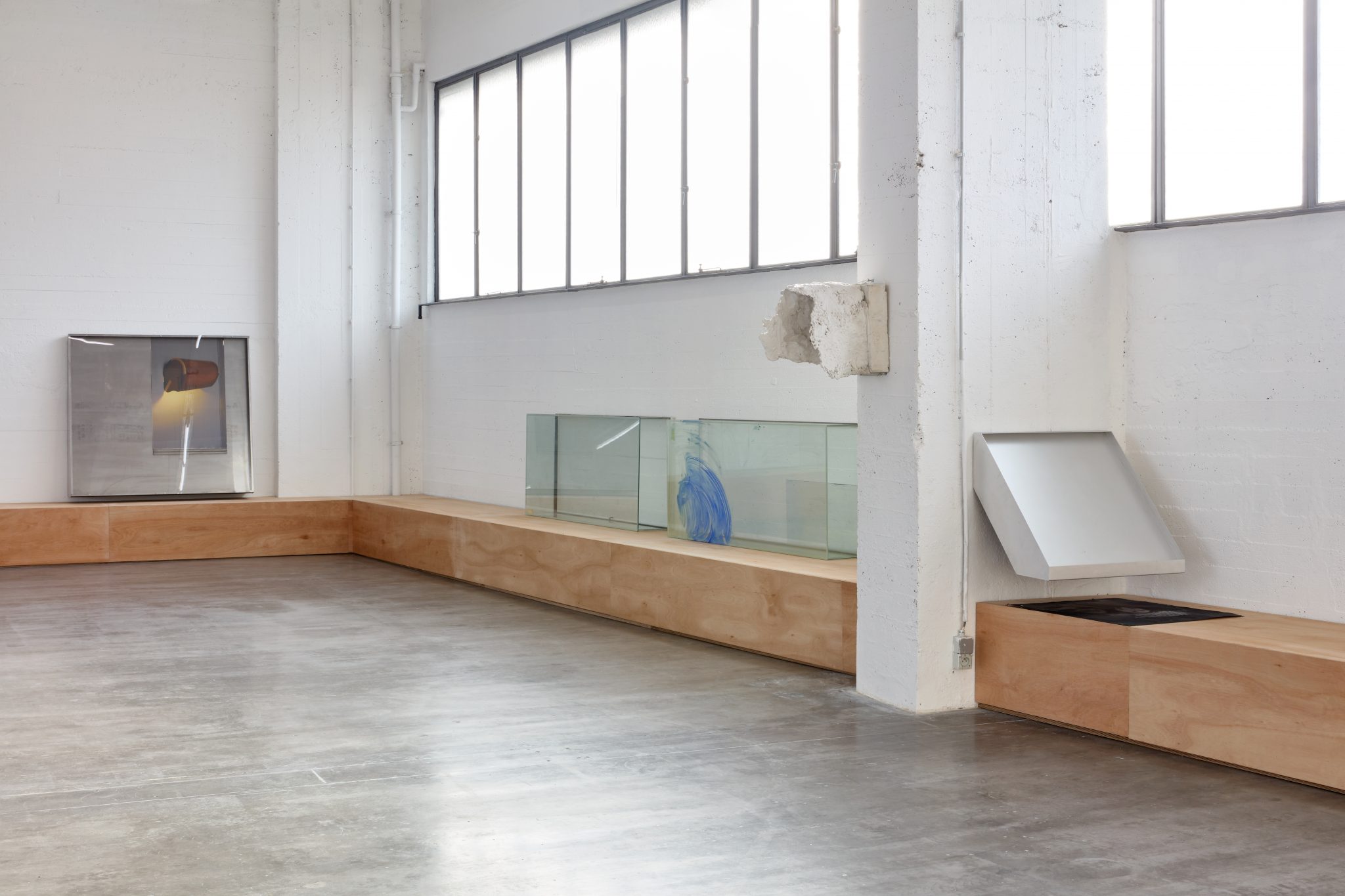the ceiling of a courtyard at Wiels, Brussels unites sculptures and photographs with a sense of purposeful withholding
The 93-year-old building that houses Wiels used to be a brewery; the institution is named after a beer once brewed there, and plunger-shaped copper vats punctuate the atrium café. The galleries are high-ceilinged, whitewashed, ghosted by modernism and industrialism. That’s evidently enough of a starting point for Thea Djordjadze, whose work has often responded to the historical elements of a given space in a practice that intersects twentieth-century abstract art references and urban detritus, plangent leftovers. Here, across several rooms on one floor, the Georgian-German artist combines myriad untitled works into what is effectively one installation. What unites these sculptures and photographs, aside from a downbeat palette of brown, grey and white, is a sense of purposeful withholding.
This is most evident in numerous pieces that recast minimalist sculpture as plinth or support. In the opening room, for example, Djordjadze installs a deep, jutting plywood shelf along the length of a big windowed wall, then leaves it empty aside from – resting at one end – an unassuming length of folded, dusty-blue tarpaulin, above which hang some flimsy, mildly bent sheets of polished steel. At the other end, meanwhile, a small metal shelf fixed above the larger one is also empty. Moving into the room, the viewer meets a long white concrete bier, stranded somewhere between mute object of contemplation and bench; and empty, Cinemascope-dimensioned glass display cases sitting on another plywood box. When you move on to a photograph hung nearby, the pulse likely quickens, until you realise you can’t quite place the brownish elongated dome floating in its grey void: seemingly emitting light, it looks a bit like an antique sconce.

The show goes on in this parsimonious, almost funny manner. One of Djordjadze’s glass cases has been roughly swiped with blue paint, as if by a window cleaner with aspirations to abstraction. Nestled under another wall-mounted metal display unit, a diagonally tilted shallow steel box that might hold a book, is a blown-up black-and-white passport-booth photo of a man in 70s-ish sunglasses and a child. Maybe the kid is Djordjadze. Certainly the image, like most everything else here, is presented as reemerging into a present where it doesn’t have much to say and that’s what it’s saying. Further photographs in the next room, framed and with a silvery oxidised look, equalise different cloudy parts of history: some depict sparse, carefully lit arrangements of geometric objects that might be the same age as the venue (or made and staged by the artist); others antique urns and similarly archaeological-looking artefacts, no labels visible.
It feels apropos that the ceiling of a courtyard – a pointed mental tickle of a title – doesn’t progress or self-explicate so much as just continue until it eventually stops, having spoken its dusty foreign language long enough. In the meantime, deeper into the show, more sculptural propositions have appeared: pastel-coloured fragments of plaster laid on the floor and protected by glass cases; three pieces of white-painted wood approximately in the shape of the letter pi, laid on a group of overlapping metal sheets and topped with a sliver of broken glass. Djordjadze arranges all this material with delicacy and a strong feel for how to punctuate yawning silence with recalcitrant event. It’s just enough to keep you moving, and to reach the inverted-modernist conclusion that the artist has prepared: that more, in this case, adds up to less.
the ceiling of a courtyard at Wiels, Brussels, 7 October – 7 January
